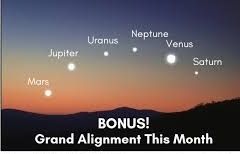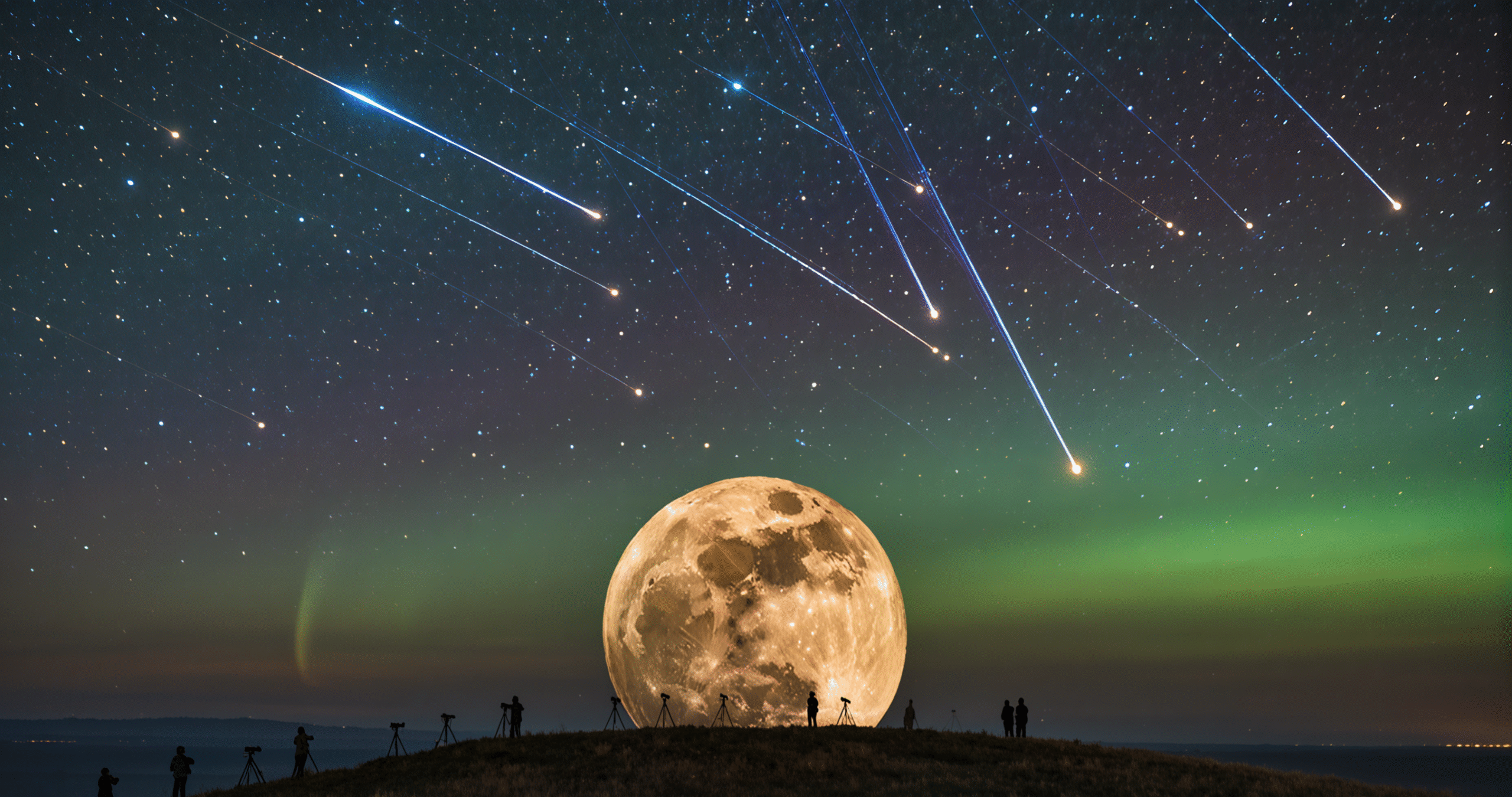GRAND ALIGNMENT THIS MONTH

Discover the most stunning astronomy events of 2025, including the Sturgeon Moon, meteor showers, asteroid flybys, Northern Lights, and planetary alignments. Dates, tips, and viewing guides for stargazers.
Astronomy Events 2025
Astronomy lovers and sky-watchers, 2025 is turning out to be a spectacular year for astronomical events and natural phenomena. From dazzling full moons and meteor showers to rare asteroid flybys, the night sky is putting on a show worth watching. Whether you’re a casual observer with a smartphone camera or an avid stargazer with a telescope, these events will leave you awestruck.
In this article, we’ll cover the most exciting astronomy events of 2025 that are making headlines—plus tips on how and when to watch them.
—
1. The Stunning Sturgeon Moon – August 2025
The Sturgeon Moon, named by Native American tribes after the giant sturgeon fish found in the Great Lakes, is one of the most beautiful full moons of the year. In 2025, it peaks in mid-August, glowing larger and brighter than usual due to its proximity to Earth.
https://youtu.be/ILw6khj08_0?si=YeRLuig28JAAIBqE
Why it’s special in 2025:
This year’s Sturgeon Moon coincides with a Perseid meteor shower, creating a dual celestial spectacle.
A rare planetary alignment will also be visible during this period, making the night sky exceptionally photogenic.
Best time to watch: Just after moonrise, when the moon appears huge on the horizon.
Best location: Areas with minimal light pollution—countryside, hilltops, or designated dark sky parks.
Pro Tip: Use a camera with manual exposure settings to capture the moon’s craters in sharp detail.
—
2. Meteor Showers Lighting Up the Sky
Meteor showers are one of nature’s most enchanting night sky phenomena. In 2025, several showers will be visible, but the Perseids in August and the Geminids in December are the real crowd-pullers.
The Perseid Meteor Shower
Peak Date: Mid-August 2025 (around the time of the Sturgeon Moon)
Why watch: Known for bright, fast meteors and occasional fireballs.
The Geminid Meteor Shower
Peak Date: Mid-December 2025
Why watch: Offers multi-colored meteors—yellow, green, blue—visible even without a telescope.
Observation Tip: Lie flat on your back, let your eyes adjust to the darkness for 20–30 minutes, and you’ll catch more meteors.
—
3. Rare Asteroid Flybys – August 8, 2025
NASA has confirmed that on August 8, 2025, two near-Earth asteroids—2025 OJ1 (~300 feet) and 2019 CO1 (~200 feet)—will make a close approach to our planet. While there’s no threat of collision, the event is a reminder of the vast number of space rocks moving through our solar system.
Why it’s fascinating:
Such close approaches allow scientists to study asteroid composition and movement.
Amateur astronomers with powerful telescopes can attempt to spot them.
Fun Fact: Studying asteroid orbits is part of planetary defense efforts to prepare for any future potential threats.
—
4. Northern Lights Extending Their Reach
Thanks to heightened solar activity in 2025, the Aurora Borealis—or Northern Lights—will be visible much farther south than usual. On certain nights in August and September, parts of the U.S., Europe, and even northern India may catch faint glimpses.
Best way to watch: Travel north, avoid light pollution, and use a tripod-mounted camera for long-exposure photography to capture the aurora’s colors.
—
5. Planetary Alignments and Lunar Eclipses
Alongside the major events, 2025 also offers:
Planetary alignments in August and November where Venus, Mars, Jupiter, and Saturn line up visibly.
Partial lunar eclipses in March and September, visible from Asia, Europe, and parts of Africa.
—
Why Astronomy Events Go Viral
Astronomy and natural sky phenomena often trend on social media for three main reasons:
1. Visual Impact: Stunning images of moons, meteors, and auroras are highly shareable.
2. Rarity: Certain events occur only once in decades or centuries, creating urgency.
3. Community Experience: People around the world watch and share their experiences simultaneously.
For bloggers, YouTubers, and Instagram creators, covering such events boosts engagement, especially when paired with high-quality photos and live updates.
—
How to Make the Most of These Events
1. Check Astronomy Calendars: Websites like NASA, TimeandDate.com, and EarthSky.org publish updated event times.
2. Use Apps: Sky-tracking apps like Stellarium, Star Walk, or SkySafari can help locate planets, stars, and meteor showers.
3. Photography Gear: A DSLR or mirrorless camera with a tripod is ideal, but modern smartphones in night mode can also produce excellent shots.
4. Join Stargazing Groups: Local astronomy clubs often host viewing parties, providing telescopes and expert guidance.
—
Conclusion
The year 2025 is a gift to sky lovers, with events like the Sturgeon Moon, Perseid meteor shower, asteroid flybys, and the Northern Lights making headlines. Whether you’re watching from your backyard or traveling to remote locations, these astronomical wonders connect us to the vastness of our universe.
So mark your calendar, charge your camera, and step outside when the night sky calls—you might just witness something unforgettable.

